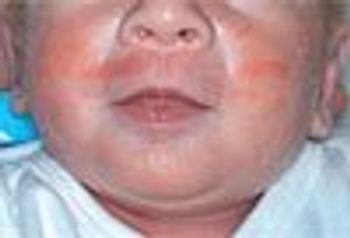
A 5-month-old girl was brought to the emergency department (ED) 1 day after she had fallen from a countertop swing onto a tile floor. The child had been loosely buckled in the swing when the mother stepped into the next room. The mother heard a crash and the baby crying: when she came back into the room, the baby's 5-year-old sister was trying to disentangle her from the swing. The infant did not lose consciousness, was quickly comforted, and did not vomit. However, the mother noted that the baby's right thigh seemed tender and that a "black eye" was developing on the left lid. The family lived several hours from the hospital and decided to observe the baby during the night and make the trip to the ED the following morning.

